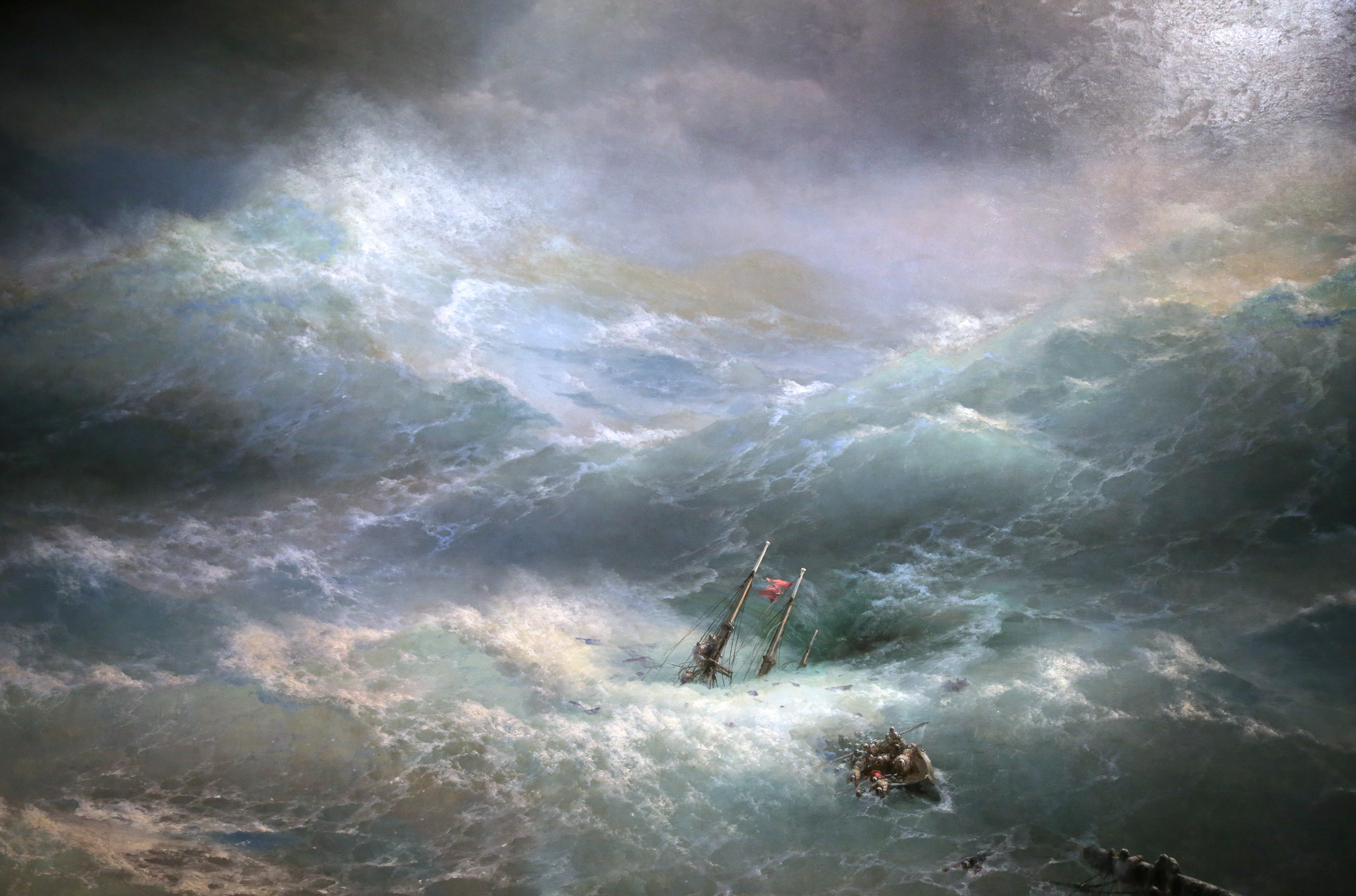

The Ninth Wave, 1850. The sea is the dominant theme in Aivazovsky’s work. He introduced the genre of marine landscape painting in Russia and raised it to the artistic heights of Romanticism. His teacher was Philippe Tanneur, a French artist invited by Tsar Nicholas I to St. Petersburg in 1835. Aivazovsky also drew inspiration from his predecessors, including William Turner and John Martin. “The Ninth Wave” is Aivazovsky’s most famous work, painted by him at the age of 33. It contains all his characteristic motifs: huge waves fringed with lacelike foam, a sky glowing rose, lilac and orange, and a group of people escaping a shipwreck.
Olesya Kurpyaeva/Evgeny Alekseev
The Rainbow, 1873.Following in the tradition established by Théodore Géricault in his painting “The Deluge”, Aivazovsky the Romantic held a particular passion for scenes of great storms and shipwrecks. The protagonists are generally depicted with no superfluous detail, allowing the sea to stand out in all its threatening majesty. Having received the very best tuition at the Imperial Academy of Arts, Aivazovsky came to demonstrate great mastery of the art of painting. This is evident here in the sky’s highly subtle tonal shifts and the scarcely perceptible rainbow, which serves to give hope of salvation to the drowning.
Olesya Kurpyaeva/Evgeny Alekseev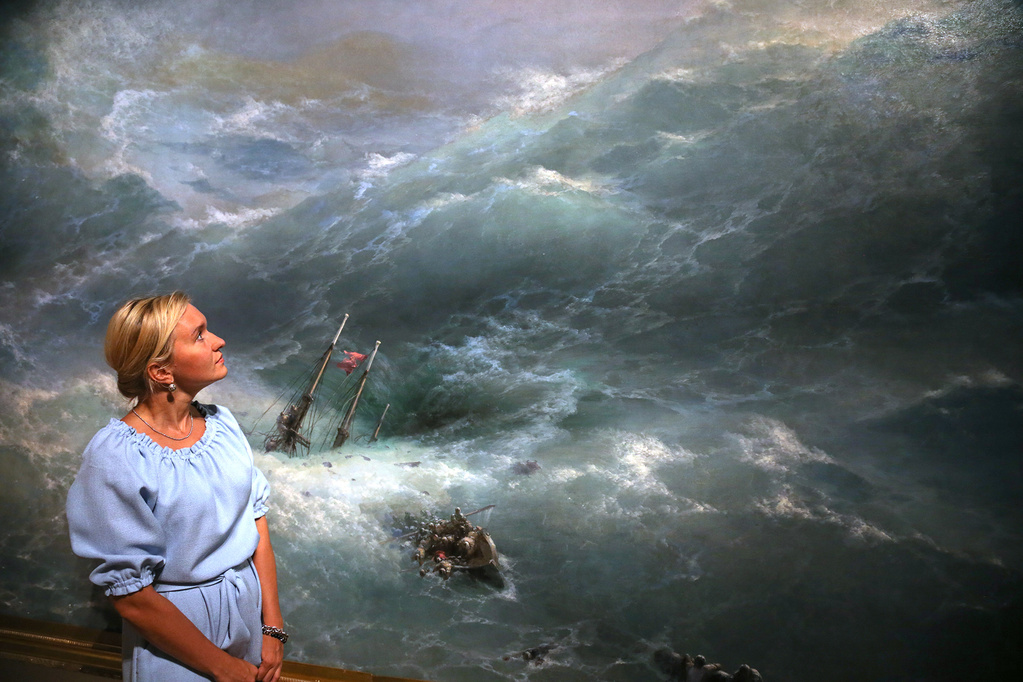
The Wave, 1889.Though he was born by the sea in Feodosia, Aivazovsky never worked in the open air, except for some small pencil sketches. All of his paintings were completed in his workshop, from memory. The painter was noted for having a phenomenal capacity to remember details of a scene. The Wave is one such piece. It was put on display to great acclaim in Paris in 1890, after which he was awarded the Legion of Honour (France’s highest order for military and civil merit).
Olesya Kurpyaeva/Evgeny Alekseev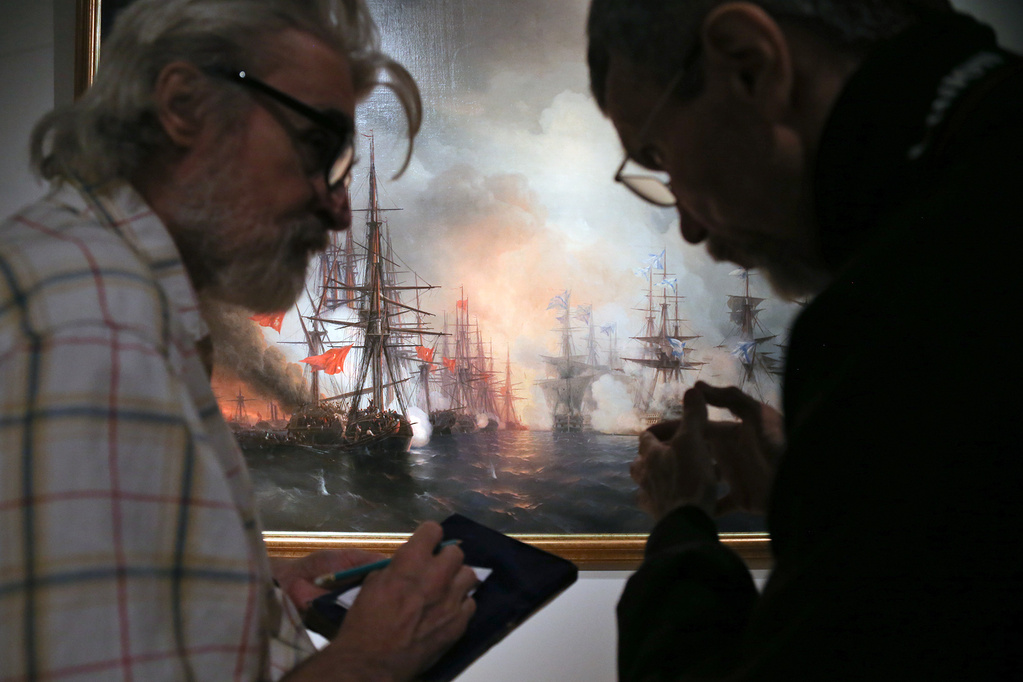
The Battle of Sinop, 1853.Aivazovsky’s great talent for painting seascapes from memory was matched by his ability to depict war scenes based on eyewitness accounts. His skills were underpinned by a deep knowledge of both subjects. He had observed the sea closely since childhood, and learnt how to paint naval battles after studying ships being rigged and completing manoeuvres. He went on to depict most of the significant victories of the Russian fleet.
Olesya Kurpyaeva/Evgeny Alekseev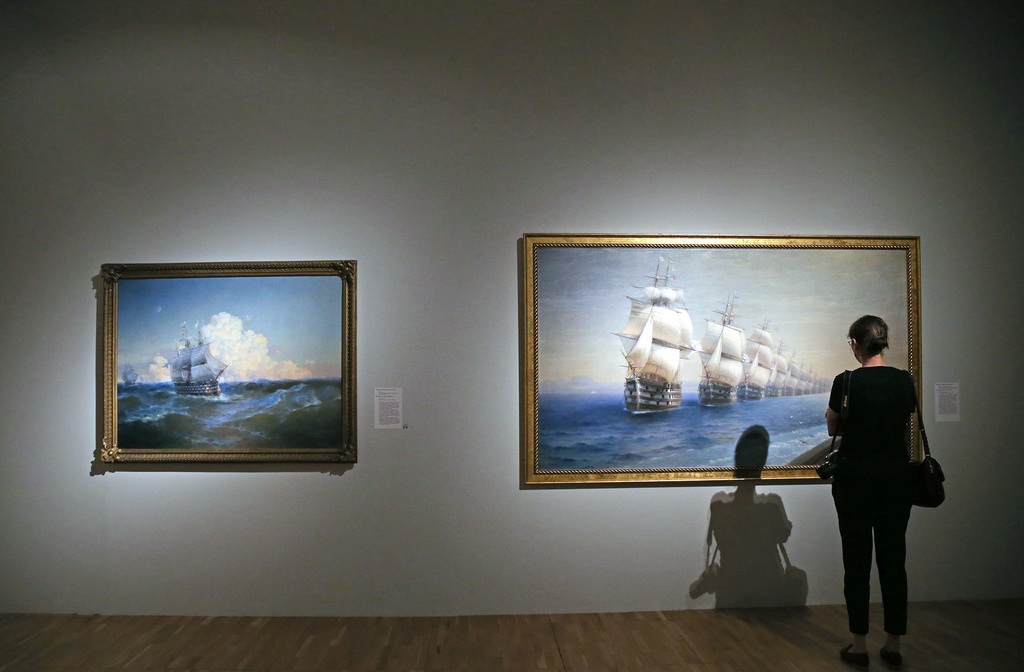
The Twelve Apostles.In 1844, Aivazovsky was appointed the official artist of the Imperial Naval Staff. This meant that he had unfettered access to all ports and ships of the Russian fleet, and was granted the right to wear naval uniform.The ‘Twelve Apostles’, a Russian navy vessel launched in 1841, was one of the finest sailing ships in the world at the time, renowned for its speed and armed with 120 cannons.
Olesya Kurpyaeva/Evgeny Alekseev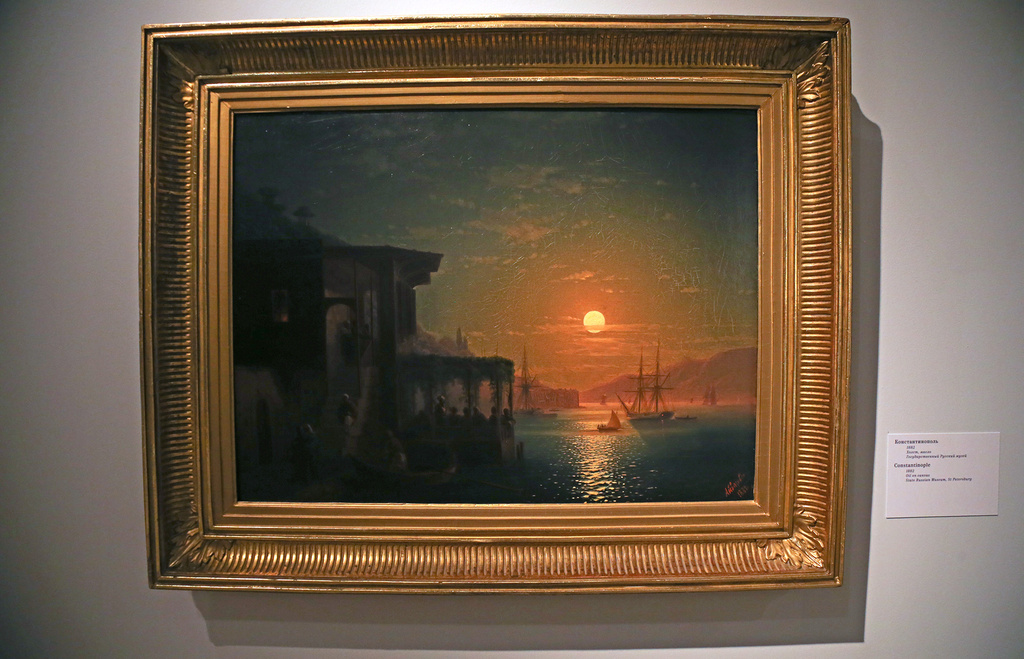
Constantinople, 1882.The fact that Aivazovsky had painted the Russian fleet’s victory over the Turks did not stop the Ottoman Empire’s rulers from buying Aivazovsky’s canvases of Constantinople. The artist clearly takes delight in the effects of light here, sketching an ephemeral trail of moonlight on the water, filling the background with a yellow-lilac luminescence and setting up the painting’s composition as if the canvas were a theatre stage with darkness in the wings.
Olesya Kurpyaeva/Evgeny Alekseev
Venice, 1842.This is one of the best-known views of Venice, painted many times over by European masters. If other 19th century artists were seized by the pace of life in the city, Aivazovsky the Romantic was enamoured of Venice’s water and its light. The clash and symbiosis of water and light, and not the people in the boat, is the painting’s only true subject.
Olesya Kurpyaeva/Evgeny Alekseev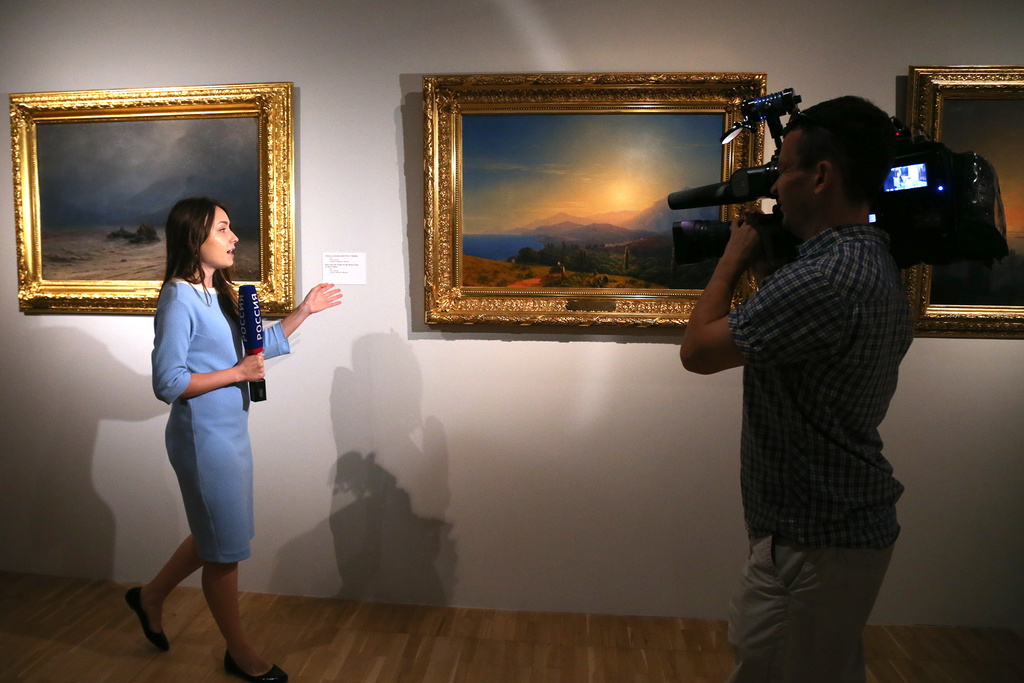
Crimea. The Hill at Feodosia, 1858.Aivazovsky was born in Crimea and returned there, not seduced by the temptations of court life in St Petersburg. He set up a workshop for himself in Feodosia and built a self-designed painting gallery which, after Aivazovsky’s death, became the property of the city.
Olesya Kurpyaeva/Evgeny Alekseev
The Great Flood, 1864.Even when dealing with biblical themes, the artist chose ones that allowed him to paint water. Struck by the wrath of God, people and animals fling themselves off the cliffs; the artist’s customary mise en scène takes on new connotations here, reminiscent both of Gustave Doré’s engravings of biblical scenes and the modern-day Hell created by the Chapman brothers.
Olesya Kurpyaeva/Evgeny Alekseev
Oriental Scene. Turkish Coffee, 1846.Aivazovsky was the favorite artist of Tsar Nicolas I, a fact that helped the artist’s career progress by leaps and bounds. In the summer of 1845 he accompanied the 18-year-old Grand Prince Konstantin (the second son of Nicholas I) on his first tour around Turkey. Constantinople delighted him: “There is nothing more sublime than this city. It makes one forget both Naples and Venice,” the artist wrote.
Press photoSubscribe
to our newsletter!
Get the week's best stories straight to your inbox